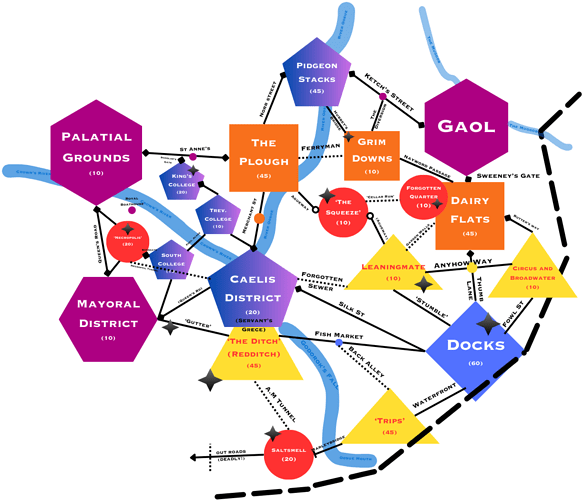Thought I’d open a thread on how to prep an old school city sandbox. I’ve been reading a bit about this recently
Been looking for methods on this and gone through a bunch of different places, maybe you guys have some thoughts.
I read through Alexandrians prepping the city, as well as his more recent city crawl idea posts. They were good but lacked a cohesive glue that I felt could carry a game session forward. Also it seemed rather heavy on prep that wasn’t that gameable.
I really liked this post about sandboxing by Dweller of the Forbidden City about sandboxing, which happens to include a city. Made me realise a more prep efficient way of making a city would be to provide tools that aid improvisation (common sandbox advice). Except I don’t like improv. Or at least, I’m shit at it. Maybe a better way of saying it is that I don’t yet know what tools I need to give myself to make closing the gaps at the table actually fun. An important thing I picked up from this post is that making stuff up on the fly is 100x easier if you do it in response to player actions. Easier to indulge a player looking for a seedy tavern by saying “yes you find one” than it is to make something interesting up off the top of your head. Still don’t have a solution for when players say “I want to look around for anything interesting.”
In addition to this, I started playing Blades in the Dark, which is all about generating missions on the fly. That game has amazing tools for ensuring missions you generate on the fly end up being satisfying gaming experiences (clocks, mixed success rolls) but I like old school location based adventure. How can a low prep city mix with mid-prep location based adventure while providing a sandbox environment that doesn’t involve a ton of wasted prep?
I’ve most recently landed on Into the Cess and Citadel, which has done wonders. Really helped frame the city as an actual gameable procedure, but I’ve always felt that crawling hex by hex is not really a city thing (though I do love how the street dangers in Cess and Citadel really make the city feel like an alive, bustling place). What I really love from this is the transformation of encounters from random things that bump into players to motivated actions taken by factions in response to player activity.
Keen to hear what you guys have read or methods you’ve used to make the city feel more important than just “the place you go to rest”. I’m gonna leave a comment on this thread detailing a method of prepping an OSR city sandbox, share your own stuff too!

